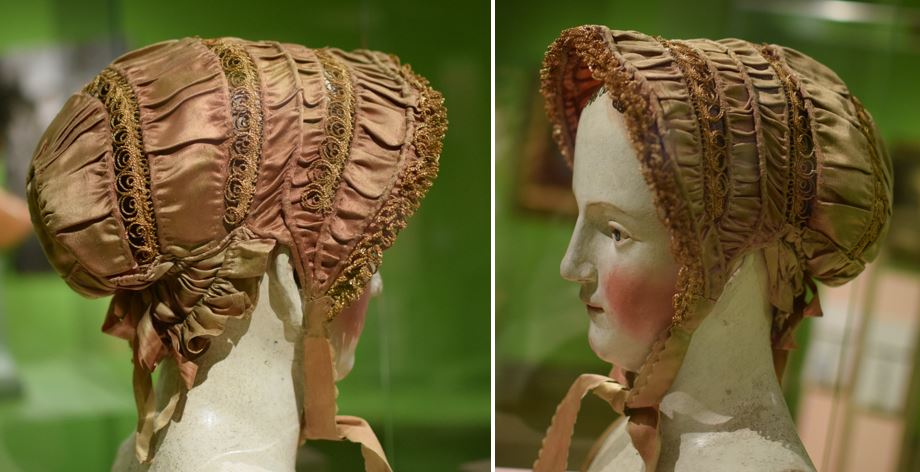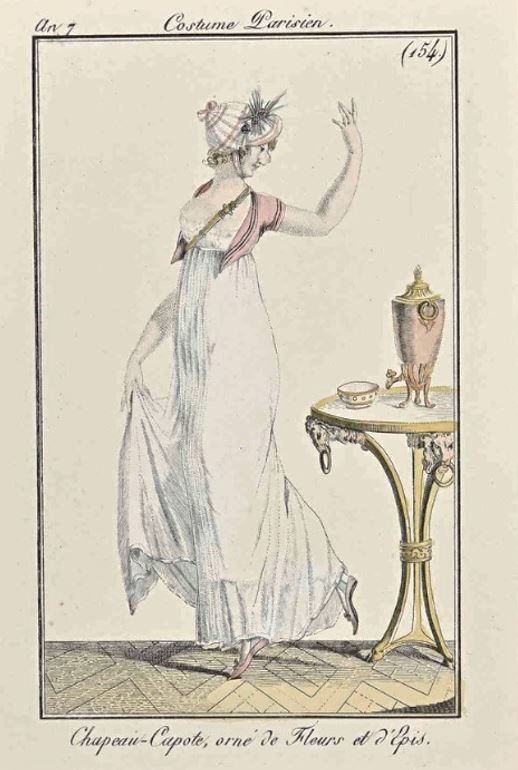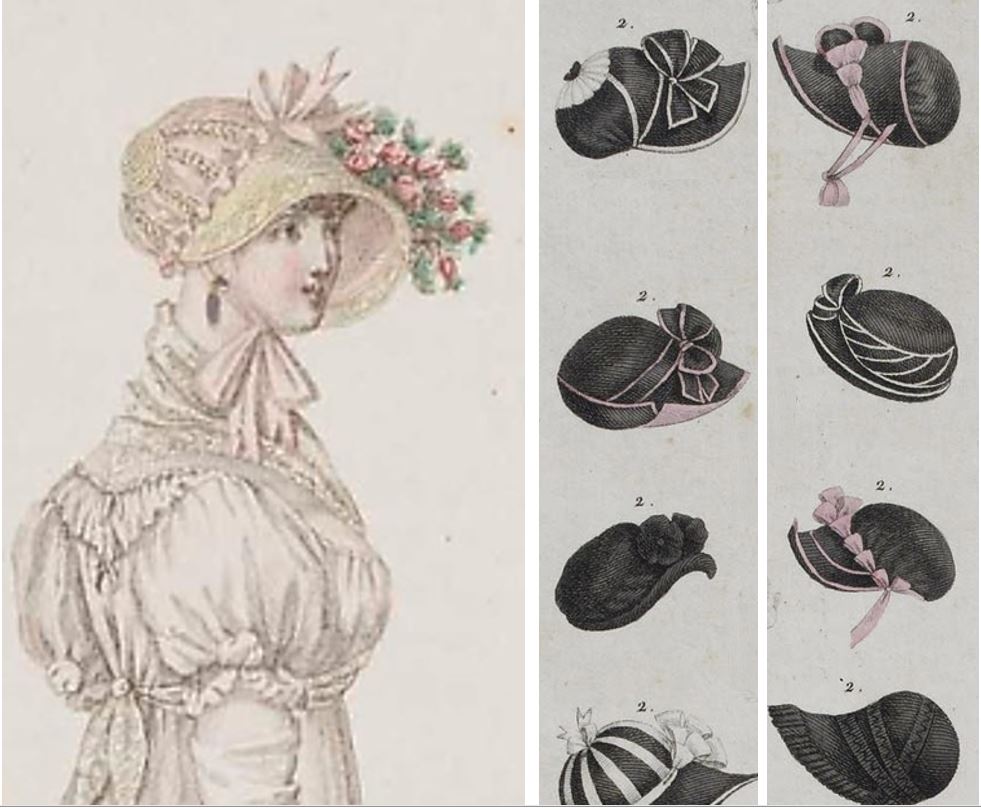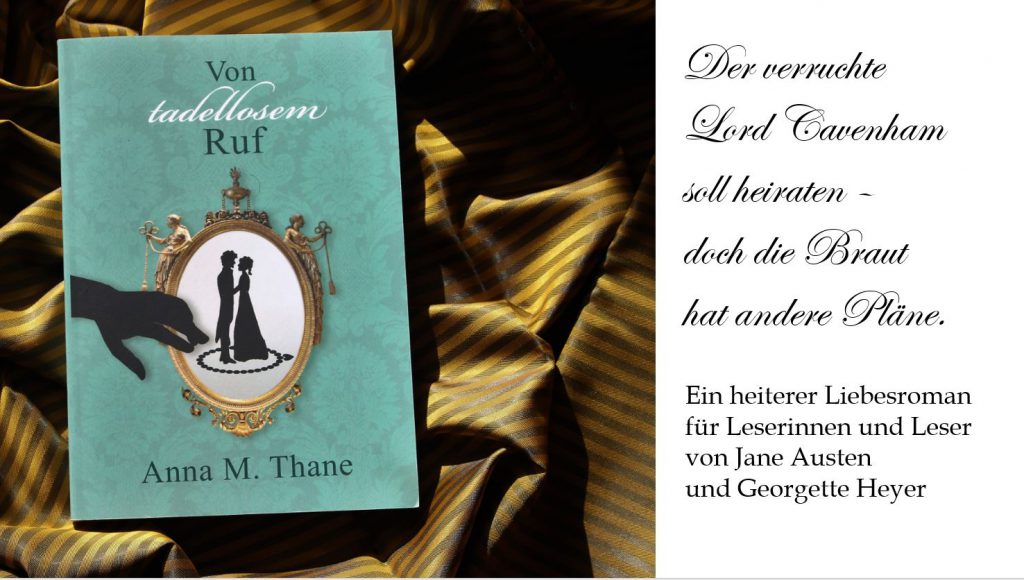
A new form of hat vied for ladies’ favour around the turn of the 19th century: the capote. The soft, cap-like hat was first created around the late 1790ies. By 1804, the capote was quite commonly worn by women and girls. It enjoyed popularity until about 1815.
What’s a capote?
Capote is the French word for “hood”. Typical for this type of hat is a short, stiffened brim that frames the face. A soft crown is shaped to the head.

What to wear with the capote?
Fueled by the discovery of ancient ruins on the Continent in the mid-18th century, people began to take an interest in Greek and Roman antiquity. Additionally, when the French Revolution drove the ancien régime and its opulent fashion away, the interest in the ancient idea of a democracy rose. The wealthy and influential took the idea further and looked back to antiquity for a new, ‘democratic’ way to dress. They came up with the fashion of Greece. Thus, tunics inspired female gowns, and of some hairstyles that were named after Goddesses and heroines of antiquity
The capote was also associated with a simple, natural way to dress. It’s light, small shape matched the new, loose and light gowns with high waists, made of muslin:

Ornaments: say goodbye to lace & ruffles
The projecting brim oft he capote was usually moderate, but could also be seen larger and more dashing:

The hat was fastened under the chin with a ribbon. Usually, the capote didn’t feature ruffles (these belonged to the fashion of the ancien régime). Instead, flowers, ribbons, braids or small feathers were used as ornaments.

How to dress the hair
With regards to hairstyle, ladies wore the front hair in curls. During this period, the hind hair was often worn short, which fitted well to the capote. Long hair could be turned up and hidden inside the hat.

The capote exited alongside other hats and caps, such as the mob cap. Besides, hairnets enjoyed a short period of popularity.

Related articles
Sources
- Köhler, Carl: A History of Costume, 1995
- Cunnington, C. Willett/ Cumming, Valerie/ Cunnington, Phillis: The dictionary of fashion history; 2010
- Tomshinsky, Ida: The Chronicle of Hats in Enjoyable Quotes: History of Fashion Accessories Series; 2013
- Musée Palais Galliera, musée de la Mode de la Ville de Paris
- Rijksmuseum Amsterdam, The NetherlandsBayerisches Nationalmuseum, Munich, Germany
Article by Anna M. Thane, author of the novel
“Von tadellosem Ruf” (http://amzn.to/2TXvrez)

